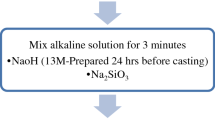Abstract
Sand contaminated with sulphates is a local problem in the Middle East Area. It is difficult to obtain well graded sand with sulphate content within the limits specified by international standards. International standard adopt different concepts in limiting internal SO3 contents in concrete. Some standards put maximum limits for SO3 by weight of aggregate only, other standards, limit the total SO3 in concrete by weight of cement in the concrete, while surprisingly a third group has no limitation on internal SO3 in concrete. In this research work, an attempt was made to study the possibility of adopting the second concept only (total SO3 in concrete by weight of cement) and overlook all other concepts, as it reasonably provides a complete picture of the presence of sulphates in the concrete mix. This work focuses only on internal sulphate attack, and investigates different concrete mixes with compressive strengths between 15 and 75 MPa. In these mixes sand with SO3 between 0.5% and 2.0% was used, thus yielding total SO3 contents by weight of cement in the range of 3.2–10.5%. Two important properties concerning sulphate attack were studied; these were; compressive strength and expansion in water up to 180 days. From the results obtained, it was found that increasing the concrete compressive strength, resulted in increasing its resistance to internal sulphate attack, and concrete mixes with high strength (>45 MPa) had almost the same expansion in water, despite the increase in the sulphate content in the sand from 0.5% to 2.0%. As a result of this work, it was clear that it is better to specify total sulphates in concrete as a percent by weight of cement, rather than limiting sulphates in aggregates as specified in some international standards. Based on the present results, it was concluded that new values of total SO3 content in concrete by weight of cement can be specified at 6.0%, 5.5% and 5.0% for concrete mixes with cement contents <400, 400–500 and above 500 kg/m3 respectively regardless to SO3 contents in the aggregates.


Similar content being viewed by others
References
Zein Al-Abidien HM (1987) Aggregate in Saudi Arabia: a survey of their properties and suitability for concrete. Mater Struct 20(118):260–264
Al-Khalaf M (1973) Effect of sulphates in sand on properties of concrete. J Iraqi Eng Soc, Serial 49:1–6
Al-Rawi RS, Ali NHM, Shalal AR, Al-Salihi RA (1998) Effective sulphate content in concrete ingredients. In: Fourth scientific conference, College of Engineering, University of Baghdad, pp 142–149
Al-Harbbi M et al (1993) The sulphate in concrete and the revision of IQS 45. National Center of Construction Laboratories, Baghdad, 22 pp
BS 5328 (1997) Methods for specifying concrete mixes. British Standards Institution, UK
IQS 45 (1984) Iraqi standard specification for aggregate from natural sources for concrete and building construction. ICOSQC, Baghdad, Iraq
DIN 4226-1 (2001) Aggregates for mortar and concrete, normal weight and heavy weight aggregate. Deutsche Norman, Berlin, Germany
IS 383 Part 1 (1970) Indian standard specifications for aggregate from natural sources. Bureau of Indian standards, New Delhi, India
ASTM standards C33-03 (2003) Specifications for concrete aggregate. American Society of Testing Materials, USA
Neville AM (2005) Properties of concrete, 4th edn. Pitman Publishing Limited, London, 844 pp
Lea FM (1970) The chemistry of cement and concrete, 3rd edn. Edward Arnold Ltd., London, pp 345–365, 393–401, 638–645
Hoshino M (1988) Difference of the W/C ratio, porosity and microscopical aspect between the upper boundary paste and the lower boundary paste of aggregate in concrete. Mater Struct 21:336–340
Gillott GE, Ritchie T (1965) A note on the occurrence of crystals of calcium hydroxide and ettringite in voids in hardened Portland cement paste. Mag Concr Res 17(50):3–4
ACI Committee 363 (1992) State of the art report on high strength concrete. American Concrete Institute, Detroit, 47 pp
Author information
Authors and Affiliations
Corresponding author
Rights and permissions
About this article
Cite this article
Kheder, G.F., Assi, D.K. Limiting total internal sulphates in 15–75 MPa concrete in accordance to its mix proportions. Mater Struct 43, 273–281 (2010). https://doi.org/10.1617/s11527-009-9487-x
Received:
Accepted:
Published:
Issue Date:
DOI: https://doi.org/10.1617/s11527-009-9487-x




